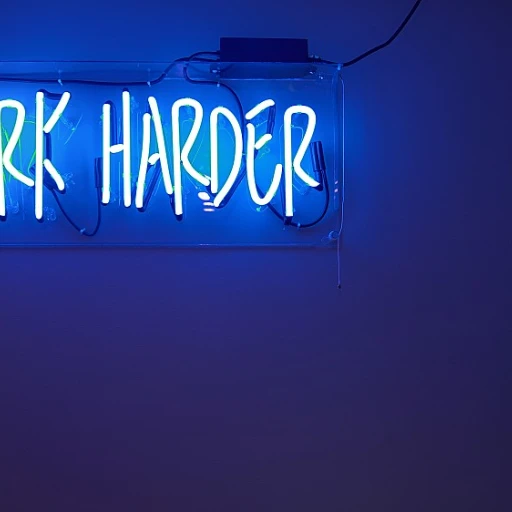
Understanding the Purpose of Leadership Critique
The Vital Role of Leadership Critique in Growth
Understanding the purpose of leadership critique is essential for fostering an environment where leaders can thrive. Critiquing leadership isn't about pointing out flaws but rather aiding in the development of effective leadership skills. This process is designed to offer constructive feedback and highlight areas for improvement, which can significantly impact team performance and organizational success. Effective leadership critiques contribute to the leadership development process by providing insights into both strengths and weaknesses. In a performance review context, feedback assists leaders in refining their management styles, enhancing communication, and improving decision-making abilities. By receiving specific, actionable feedback, leaders can better guide team members toward achieving shared goals. A well-conducted leadership critique not only addresses immediate concerns but also facilitates long-term growth. It reinforces the importance of strategic thinking and time management, helping leaders prioritize their workloads and enhance overall productivity. Through regular performance reviews, leaders can track their own progress as well as that of their teams, identifying opportunities for continuous improvement and adjustment. Implementing effective feedback systems within organizations enables employees to participate in leadership surveys, providing anonymous feedback through structured review templates. This can encourage openness and honesty, ultimately leading to better communication and enhanced performance throughout the team. For a comprehensive understanding of how leadership critique intertwines with development models, exploring resources such as the Hayes Mediation Model can provide valuable insights into the complex dynamics of leadership evaluation. Developing a framework for critique that emphasizes growth helps organizations maintain a culture of feedback, driving both individual and team success.Key Elements of an Effective Leadership Critique
Essential Components of a Constructive Leadership Critique
Understanding the core elements of an effective leadership critique is vital for spurring meaningful change and development within an organization. By focusing on these key components, you can ensure that your feedback helps leaders refine their skills and enhance team performance.- Objective Assessment: Begin by adopting a neutral stance to evaluate leadership performance. This involves focusing on specific actions and outcomes, rather than personal characteristics or biases. Objective assessments help leaders identify specific areas of improvement and gain clarity on how they can enhance their leadership style.
- Constructive Feedback: Aim to provide feedback that is both honest and supportive. Constructive feedback should highlight strengths and weaknesses while suggesting actionable steps for improvement. Strategically timing feedback also ensures that it resonates with the leader's experience and growth trajectory.
- Performance Metrics: Use performance reviews to quantify progress and identify trends in leadership effectiveness. Clear metrics provide a foundation for transparent discussions and objective evaluations. Regular performance reviews support long-term development by setting measurable goals and benchmarks for success.
- Communication Channel: Ensure that there is an open line of communication between the person providing the critique and the leader receiving it. An effective leadership critique should encourage dialogue, where leaders feel empowered to ask questions and seek clarification. This helps cultivate an environment where feedback is seen as an opportunity for growth rather than criticism.
- Leadership Surveys: Implementing leadership surveys can be an invaluable tool for gathering insights into how leadership decisions impact team members. These surveys offer employees a structured way to provide input on leadership effectiveness, helping to uncover hidden strengths and areas that need development.
Common Pitfalls in Leadership Critique
Recognizing Obstacles in Evaluation Processes
Identifying the common pitfalls in leadership critiques is essential for improvement and development. To enhance leadership performance, both leaders and employees need to be aware of the challenges they might face during the review process.Avoiding Subjectivity
One significant pitfall is the tendency to let subjectivity cloud the evaluation. Performance reviews should not fall prey to personal biases or preferences. Instead, these reviews should be grounded in objective data and aligned with established leadership goals. A leadership review template can help ensure consistency.Preventing Miscommunication
Miscommunication is another challenge. Leaders often struggle with conveying constructive feedback effectively. Clear communication skills are vital, as unclear messages can lead to confusion among team members, hindering their performance. Ensure that feedback is actionable and specific, helping employees understand their strengths and weaknesses.Balancing Feedback
Overloading an employee with negative feedback without acknowledging achievements can demoralize them. It's important to strike a balance by integrating positive feedback. This approach not only boosts morale but also highlights a clear path for areas improvement.Addressing Resistance to Change
Employees or team members may resist feedback if they perceive it as a threat. This resistance can result in a lack of progress. To combat this, leaders must foster an environment where feedback is seen as an opportunity for growth. Creating a culture of continuous feedback can reduce resistance and encourage long-term development.Effective Time Management
Finally, time management is crucial. Dedicate sufficient time for the review process to ensure comprehensive evaluations. Rushed feedback sessions can lead to oversight and fail to provide the team the insights needed for improvement. By recognizing and addressing these pitfalls, organizations can smoother the feedback process, ensuring leadership and employee performance reviews contribute positively to leadership development. For detailed strategies on evaluating team dynamics, you can explore key team behaviors for cohesion.Tools and Techniques for Leadership Evaluation
Effective Leadership Evaluation Techniques for Better Results
Evaluating leadership performance requires a thorough and structured approach that incorporates multiple strategies to promote leadership development. Here are some valuable techniques for conducting leadership evaluations within your team or organization:- 360-Degree Feedback: One of the most comprehensive tools for leadership evaluation, 360-degree feedback gathers insights from various sources, including peers, team members, and supervisors. This feedback system can highlight areas of improvement while also recognizing strengths, helping leaders refine their skills and enhance long-term performance.
- Performance Reviews: Regular performance reviews enable leaders to assess leadership skills in action. By setting clear goals and using a structured review template, management can provide targeted feedback to optimize team dynamics and facilitate employee development.
- Utilize Leadership Surveys: Leadership surveys provide valuable data on leadership style, decision making, and strategic thinking capabilities. By analyzing the feedback submitted by team members, organizations can pinpoint strengths and weaknesses in leadership performance, further informing development plans.
- Review Phrases and Templates: Consistent use of review phrases and templates in performance reviews helps to maintain objectivity and focus in assessing leadership attributes. This structured approach assists in delivering constructive feedback and effectively communicating areas for improvement.
- Employee Performance Tracking: Monitoring employee performance over time is fundamental to evaluating leadership impact. Effective leaders typically inspire positive outcomes in team performance, showcasing their ability to motivate and guide team members towards achieving collective and individual goals.
- Observation and Self-Reflection: Encouraging leaders to engage in self-reflection and actively observe their leadership interactions can deepen their understanding of personal leadership styles. This reflective practice can highlight skill gaps and encourage the pursuit of continuous improvement.
- Time Management Evaluation: Effective leaders excel in time management, balancing various responsibilities without compromising on their leadership duties. Tools like time logs and scheduling apps can assist in assessing how well a leader is managing their time and responsibilities.
Creating a Culture of Feedback in Organizations
Instilling Feedback as a Core Value
Creating a culture of feedback within an organization requires deliberate effort, especially from leaders who understand the purpose of leadership critique. To foster an environment where feedback is valued and regularly practiced, it's essential to integrate feedback into everyday processes.Integration into Performance Reviews
One practical way to embed a feedback-driven culture is through regular performance reviews. These reviews should not be limited to an annual event but become a continuous process, where team members are encouraged to give and receive feedback that focuses on leadership development, strengths, and areas for improvement. Using a review template can provide structure, ensuring consistency in evaluating leadership performance.Encouraging Open Communication and Constructive Feedback
Leaders need to model open communication and encourage their team to voice constructive feedback. Utilizing leadership surveys can give employees the opportunity to express their perceptions of leadership style and decision-making processes, highlighting both strengths and weaknesses. Providing clarity on how feedback will help improve management and team performance is vital to gaining buy-in from employees.Time Management and Strategic Thinking
For feedback to be effective, leaders must demonstrate excellent time management skills. Allocating time for feedback sessions and ensuring they are a part of regular workflow is crucial. This reiterates the importance of the process and shows team members that feedback is a priority. Moreover, leaders need to engage in strategic thinking to act upon the feedback received, linking it to the organization's long-term goals.Training and Leadership Development Programs
Offering training programs focused on leadership skills, including communication and conflict management, can further cultivate a robust feedback culture. These programs should emphasize the role of leaders in facilitating reviews and fostering an environment where every team member feels comfortable and motivated to contribute their observations and insights.Celebrating Feedback Successes
Recognizing and celebrating when feedback leads to positive changes in leadership or team performance can serve as a powerful motivator. Sharing success stories where feedback has led to tangible improvements reinforces the value of this practice and encourages others to participate actively. This celebration of successes is also critical in acknowledging the effort of those who contributed valuable insights, cultivating a sense of community and shared purpose.Case Studies: Successful Leadership Critiques
Real-World Examples of Leadership Critique
Examining real-world examples of leadership critique can provide valuable insights into how organizations can effectively evaluate and improve leadership performance. These case studies highlight the importance of constructive feedback, strategic thinking, and communication in leadership development.
Case Study 1: Tech Company Revamping Leadership Style
A leading tech company faced challenges with its leadership style, which was impacting team performance and employee morale. By implementing a structured leadership survey, the company gathered feedback from team members about their leaders' strengths and weaknesses. This feedback was used to tailor leadership development programs focusing on areas of improvement such as decision making and time management. Over time, the company observed significant improvements in team dynamics and overall employee performance.
Case Study 2: Retail Chain Enhancing Communication
A large retail chain recognized that communication issues were hindering its management team. To address this, they introduced regular performance reviews and feedback sessions. Leaders were encouraged to engage in open dialogues with their teams, fostering a culture of feedback. This approach not only improved communication but also helped leaders align their goals with those of their team members, leading to better performance and employee satisfaction.
Case Study 3: Non-Profit Organization Focusing on Long-Term Development
A non-profit organization aimed to improve its leadership skills by focusing on long-term development. They utilized a review template to conduct leadership evaluations, identifying areas for improvement and setting clear goals for leaders. By investing time in leadership training and development, the organization saw enhanced leadership performance and a more motivated workforce.
These case studies demonstrate that effective leadership critique requires a commitment to continuous improvement and a willingness to adapt. By leveraging tools and techniques for leadership evaluation, organizations can create a culture of feedback that supports both leaders and team members in achieving their full potential.












